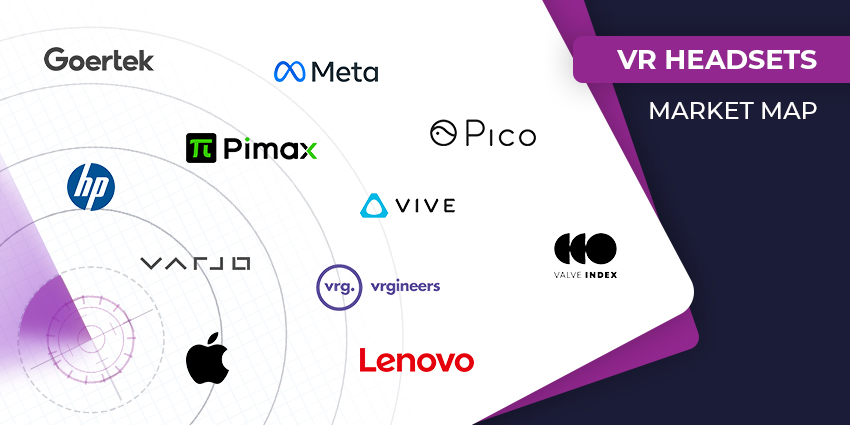It’s fair to say the construction (AEC) industry represents perhaps one of the most significant markets for XR technology. Every aspect of extended reality has a unique part to play in AEC operations. While virtual reality allows for the development of virtual blueprints and project plans, augmented and mixed reality improve access to content on-site, and enhance collaboration.
Used correctly, the right XR technology can accelerate the development of a project, and allow for innovative new designs, created by a multitude of worldwide specialists. What’s more, these tools can also pave the way for safer operations in the AEC space.
Today, we’re looking a little more closely at the benefits of XR in the construction industry, by exploring some of the most innovative case studies published by market-leading vendors.
Varjo and Sellen Construction
A leading general contractor within the Pacific Northwest, Sellen Construction was searching for a new way to help designers, engineers, contractors, and anyone else involved in a construction project collaborate on successful strategies. The company believed VR could be the perfect opportunity to reduce the time it takes for professionals to make decisions about projects, reduce lead times, and communicate end-results to clients.
After trying a multitude of different VR solutions, Sellen Construction turned to Varjo and their immersive virtual reality headsets. According to the company, the image quality was so crisp the users really felt as though they were standing in a different world.
Varjo’s technology, alongside integrations with Unity and Unreal Engine has allowed the construction leaders at Sellen to boost communication between teams, and enhance the development of amazing virtual reality mock-ups.
Microsoft and the Haas Group
From single-family homes to luxurious villas and company headquarters, the Haas group has developed virtually every kind of building consumers can think of in prefabricated forms. Since its founding in 1972, the company has been rapidly growing, and now has around a thousand qualified employees working in locations around the world.
Unfortunately, many administrative processes implemented by the Haas group were restricted by old-fashioned technologies. Adjusting designs based on customer requests was a time-consuming and expensive process. The company decided they needed to update their technology as a result, and turned to Microsoft for assistance.
With the Microsoft ecosystem, and the HoloLens 2 headset, it’s easier to provide everyone with a comprehensive view of what a project will look like, and make rapid changes to designs. The Haas group can even offer virtual tours for buyers using Microsoft tools.
HTC VIVE and CannonDesign
An architectural design firm operating in 18 offices around the globe, CannonDesign has always had their finger on the pulse of the technology landscape. However, the company began to suffer from severe issues surrounding collaboration and teamwork in recent years. Traditional strategies required employees to travel to different locations to connect with clients and colleagues.
What’s more, many specialists relied on elaborate physical mock-ups to showcase what a project might look like upon completion. The existing design process was proving to be too inefficient and expensive for the business, which led to the exploration of new means of creativity and collaboration through VIVE and NVIDIA.
With a custom enterprise-grade virtual reality solution, CannonDesign was able to introduce an environment where users could quickly validate design concepts through VR, host remote meetings where clients and designers could collaborate virtually, and share digital mock-ups.
Unity and DPR Construction
One of the biggest challenges facing most AEC companies is the time it takes to correct design or installation issues once they’re recognised in the field. Rework costs the construction industry up to $65 billion a year in the United States alone. Fortunately, more contractors are beginning to embrace virtual design and construction methods as a solution.
DPR construction, one of the top 10 contractors in the ENR landscape, embraced technology from Unity, Microsoft HoloLens and VisualLive as a way of boosting project planning opportunities and collaboration across projects. The solution allows employees to experience BIM models virtually on the job-site, and identify issues before building begins.
The solution implemented by DPR Construction has allowed the company to reduce the amount of expense incurred by having to fix and correct problems after a project has already been implemented.
Magic Leap and VIM AEC
For contractors and clients in the AEC space, there’s often a significant gap between the two-dimensional representations of models and plans created, and the finished result of a project. While virtual reality offers a fantastic option for some companies, others believe the real value is in augmented reality, thanks to its ability to connect the real and virtual landscapes.
VIM AEC, a company which specializes in making BIM files used by construction companies more accessible, joined forces with Magic Leap to create a new solution for AEC companies. Together, these companies have built a new solution to allow for VIM files to be viewed on Magic Leap devices, bringing content into the real world.
VIM AEC’s collaboration with Magic Leap has led to the development of an environment where anyone can view what a project will look like, overlayed on top of the existing physical environment, for a more immersive experience.
Microsoft and PCL Construction
One of the earlier examples of a company in the AEC space embracing the potential of mixed reality comes from PCL Construction. This company aimed to turn the old-fashioned construction processes used by similar brands upside down with a push towards IoT technology, Microsoft cloud services, and the mixed reality environment of HoloLens.
Using data from Azure IoT sensors, advanced insights, and HoloLens tools, the company has discovered a new way to increase safety on the job site, enhance productivity, and develop new opportunities for boosting customer satisfaction.
The HoloLens headset offered by Microsoft allows PCL to plan and model residential interiors and other aspects of projects in advance. The technology has also become a valuable sales tool for the brand, allowing the company to provide behind-the-scenes insights into projects before they begin.







